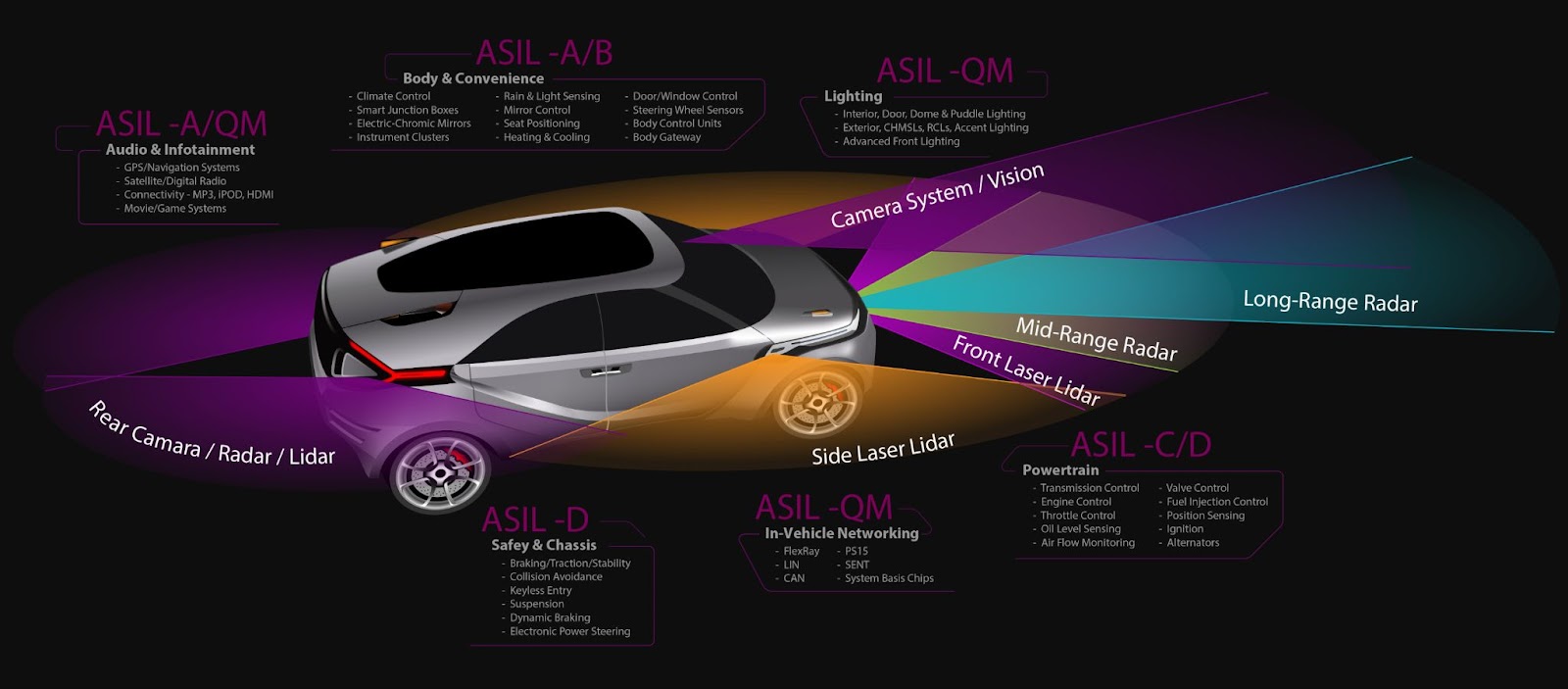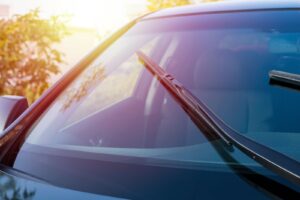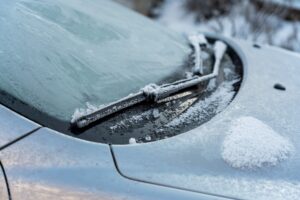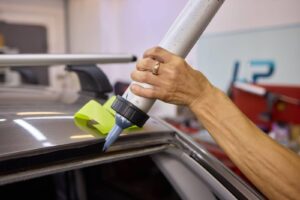Every time we hit the road, we trust our vehicle will keep us safe — but are our vehicles equipped with ADAS? Many drivers are unaware of this vital technology. This innovative feature enhances vehicle capabilities, making our drives easier and more secure.
ADAS comes packed with helpful features like adaptive headlights and automatic emergency braking. These systems work together to provide real-time support, ensuring we can make split-second decisions while driving. Understanding whether your vehicle is ADAS-equipped and how these features function is essential for safe driving.
In this article, we’ll explore how to determine if your vehicle has ADAS and what you need to know about its repair and maintenance. By looking at aspects like ADAS calibration and servicing, you’ll ensure your vehicle remains in optimal condition and is capable of keeping you safe on the road.
Understanding ADAS driving
Understanding ADAS is essential for all vehicle owners. These systems include features like lane departure warnings, collision warnings, and Blind Spot Detection. ADAS uses cameras, sensors, and radars to detect what’s happening around the vehicle, helping you stay safe on the road.
ADAS driving systems need regular maintenance to work correctly. You may not know, but getting a windshield replacement in Utah might affect your ADAS because the sensors and cameras often sit around the windshield area. Proper ADAS calibration after a replacement ensures they work correctly.
Regular maintenance includes checking steering angle sensors and wheel alignment, which are crucial for ADAS to function effectively. Vehicle manufacturers and repair facilities use specialized equipment and calibration tools to keep your ADAS systems reliable.
Key features of ADAS
ADAS is designed to help drivers stay safe on the road. They reduce human error by alerting drivers to possible issues and taking action to avoid accidents. These systems are becoming common in many vehicles, helping drivers with tasks that can be challenging or easy to forget.
Adaptive headlights
Adaptive headlights are an essential part of ADAS. They adjust the direction and intensity of light beams based on the car’s speed, steering angle, and other factors. This helps drivers see better in the dark, especially on winding roads. Adaptive headlights automatically brighten and dim, reducing glare for oncoming vehicles.
Automatic emergency braking (AEB)
AEB helps prevent accidents by automatically stopping the car when a collision seems likely. AEB uses sensors to detect obstacles or rapidly slowing vehicles ahead, reducing the chance of rear-end collisions.
Lane departure warning
Lane departure warning systems alert drivers if they accidentally drift out of their lane. This feature helps prevent accidents caused by distracted or drowsy driving. It uses cameras to monitor lane markings and provides warnings through beeps or vibrations if the vehicle strays over the lines without signaling.
Traffic sign recognition
Traffic sign recognition systems read road signs and display information on the dashboard. They help drivers stay informed about speed limits, stop signs, and other important road instructions. This feature uses cameras to detect and recognize signs, assisting drivers to follow the rules and stay safe.
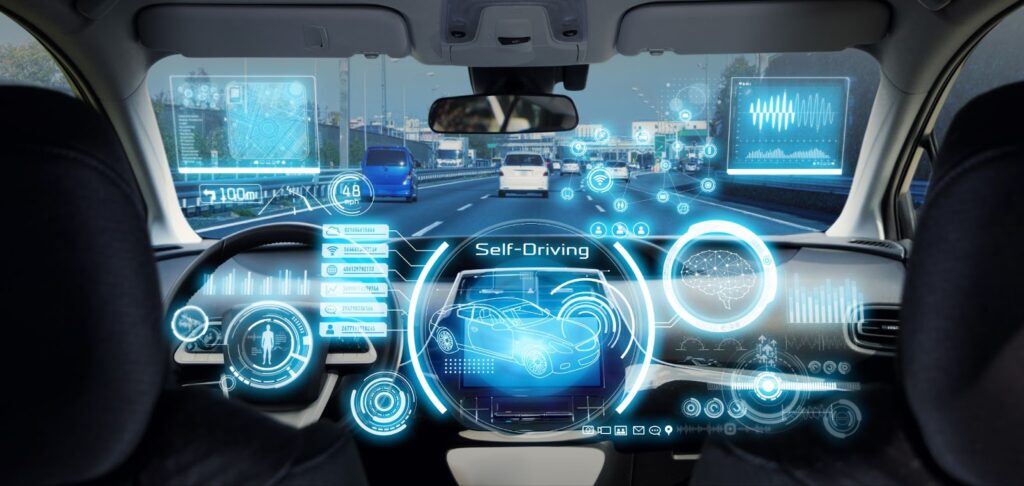
Importance of calibration
Calibration keeps your car’s ADAS in top shape. ADAS driving features help drivers stay safe on the road by offering lane departure warnings and collision alerts. For these systems to work correctly, you must properly calibrate them. When a system is not calibrated, it can give false warnings or fail to alert you to danger, jeopardizing your safety.
Calibration also ensures that all components, like Blind Spot Detection and lane departure warnings, function as intended. Proper calibration helps the vehicle understand its environment, bolstering road safety. Moreover, calibration supports vehicle owners’ peace of mind, knowing that their advanced systems are running smoothly and efficiently.
What is calibration?
Calibration is adjusting your vehicle’s ADAS to ensure it works correctly. Think of it like tuning a musical instrument, so it plays the right notes.
In a car, this means making sure steering angle sensors, cameras, and radars align and function as they should. Without this alignment, ADAS driving features may fail to detect blind spots or other hazards on the road.
Calibration uses specialized equipment to measure and fine-tune various systems. There are different calibration types, each focusing on specific components of your car’s ADAS. You take the first step in maintaining your vehicle’s safety features by understanding what calibration is.
Types of calibration
There are two main types of calibration: static and dynamic.
Static calibration uses calibration tools to adjust the sensors without the car moving. It often occurs in a repair facility or collision repair shop and involves aligning sensors based on the vehicle manufacturer’s guidelines.
Dynamic calibration happens while driving. It requires the car to be on the road. This calibration type often uses real-time data from the road and the vehicle’s advanced systems to make adjustments.
Each type has its own use and serves specific systems within the car. Some vehicles require both types for the proper calibration of their ADAS features.
When is calibration necessary?
Calibration is essential whenever you have windshield replacement in Utah or other areas, as the sensors attached to the windshield need realignment. It is also important after wheel alignment, collision repair, or replacing any ADAS-related component. Even minor disruptions, like a fender bender, can affect sensor accuracy.
If your vehicle gives frequent false alarms or doesn’t warn you of hazards, that is a clue that you need to calibrate. Vehicle owners should consult a collision repair shop specializing in ADAS calibration to ensure all systems are accurate. Calibration keeps your advanced systems in check, enhancing your drive and ensuring safety.
Recalibration frequency
Several factors influence how often your ADAS needs recalibration. Recalibration is essential any time you replace a vehicle component that interacts with ADAS, like steering angle sensors.
Road conditions also affect your ADAS; rough roads or potholes might jar the system, necessitating recalibration.
Additionally, any software updates vehicle manufacturers provide should prompt an ADAS calibration to ensure all advanced systems align with the new settings.
Servicing ADAS-equipped vehicles
Servicing vehicles with ADAS gets quite complex. These systems depend heavily on sensors and cameras strategically placed around the vehicle.
For instance, even a routine task like replacing a windshield can impact the ADAS. If these systems are not recalibrated correctly afterward, it could compromise road safety, increasing the risk of accidents or system failures.
Additionally, technicians need to be precise when servicing these vehicles. Properly aligning the wheels and other components is vital because even small inaccuracies can disrupt the entire system. This makes procedures like wheel alignment especially important for vehicles equipped with ADAS.
Importance of skilled, qualified technicians
Having skilled technicians work on your vehicle ensures that all ADAS features function the way they’re designed to. Qualified technicians understand how important ADAS calibration is after repairing or maintaining your vehicle to ensure the sensor is accurate.
Technicians trained in ADAS systems know how to handle advanced automotive technology. They can perform tasks such as steering angle sensor adjustments and address issues related to blind spots.
When these systems are in the hands of knowledgeable professionals, vehicle owners can trust that their vehicle’s ADAS features will work optimally.
Necessary tools and training
Servicing ADAS-equipped vehicles requires specific tools and a deep understanding of the systems. Repair facilities need to have the right technology to handle tasks like dynamic calibration and precise adjustments, ensuring that all sensors and cameras are properly aligned after any repairs.
In addition to the right equipment, technicians must also be well-trained. They need a solid grasp of the advanced systems used in these vehicles and must be equipped to handle any issues. Regular training, often provided by vehicle manufacturers or Original Equipment Manufacturers (OEMs), is crucial.
This training helps technicians stay informed about the latest ADAS features and understand the necessary servicing protocols to maintain these systems effectively.
Understanding your vehicle
Having a solid understanding of the ADAS in your cars is essential for ensuring safety on the road. Familiarizing yourself with how these systems operate can significantly contribute to better driving practices and accident prevention.
Firstly, knowing the specific ADAS features your vehicle is equipped with, such as automatic emergency braking, blind-spot detection, or lane departure warnings, allows you to utilize these functions more effectively.
It’s important to understand the limitations and conditions under which these systems operate. For instance, certain features may not function optimally in bad weather conditions such as heavy rain or fog, or may depend on clear road markings to work correctly.
It’s also a good idea to regularly consult your vehicle’s owner manual and stay informed about any updates or recalls that affect the ADAS.
Proactive engagement with your vehicle’s ADAS not only aids in maintaining the technology but also empowers you as a driver. It ensures that you are relying on these systems correctly and safely, which in turn, maximizes the protective benefits offered by ADAS.
Ultimately, a well-informed driver is a safer driver, and understanding your vehicle’s ADAS is a crucial step in achieving that safety.
Maintain your car’s ADAS with Utah Mobile Auto Glass
If you need windshield replacement in Utah, don’t hesitate to bring it to the experts at Utah Mobile Auto Glass. Our team has the latest technology and training to ensure your system functions perfectly.
Contact Utah Mobile Auto Glass today to schedule your ADAS system service and drive with confidence, knowing your vehicle is in expert hands. Trust Utah Mobile Auto Glass for reliable, professional ADAS maintenance and repair.
situs hk toto slot toto slot link slot gacor situs slot gacor situs toto toto slot toto togel toto slot situs toto situs togel bento4d login toto slot situs gacor toto slot toto slot toto togel situs toto data macau bento4d slot gacor

